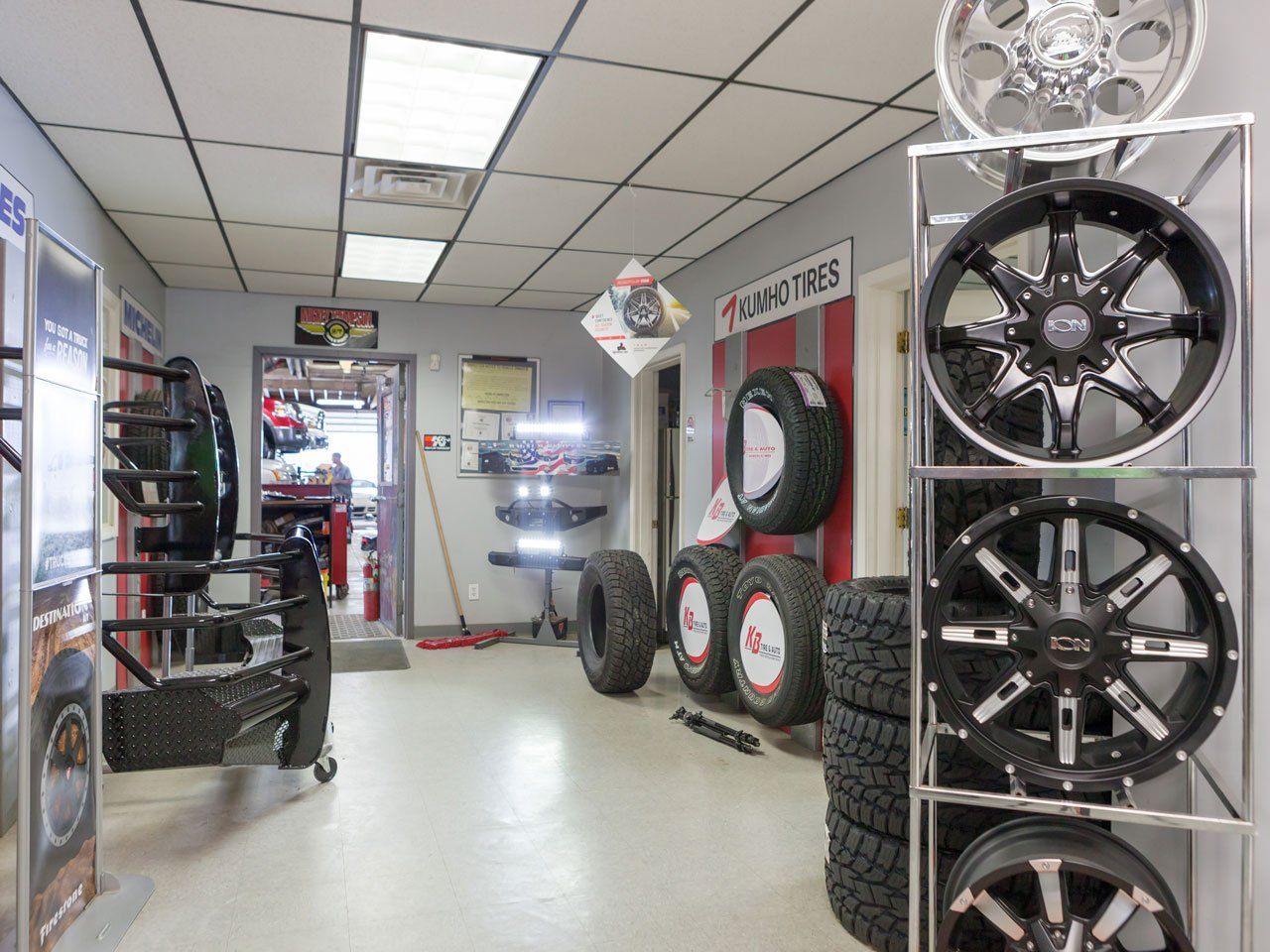Batteries & Electrical
WHAT DOES AN ALTERNATOR DO?:
- Provides power to the electrical system
- Recharges the battery when the car is running
HOW DOES A VEHICLE’S START SYSTEM WORK?
TOP 5 THINGS TO DO IF YOUR CAR WON’T START
CHECK YOUR CAR’S BATTERY
TIME TO REPLACE THE IGNITION SWITCH
QUICK TIP FROM KB TIRE & AUTO: Remember, your car’s battery controls your headlights and dashboard. If your headlights and dashboard turn on, you’re most likely dealing with a bad ignition switch.
DO YOU HEAR THE ‘CLICK, CLICK, CLICK’ OF A BROKEN STARTER
WHEN WAS THE LAST TIME YOU CHANGED YOUR FUEL FILTER?
DO YOU NEED GAS?
AUTOMOTIVE ELECTRICAL SYSTEM GLOSSARY
- Battery:
Composed of a series of lead plates submerged in a 35% sulfuric acid, 65% water solution, your vehicle’s 12-volt battery houses a chemical reaction releasing electrons through conductors, producing electricity which is then channeled into your vehicle’s electrical system.
The battery supplies electricity to all of the electrical system components, including the essential power required to start your vehicle. ‘Gentlemen you may start your engines!’ In periods of high demand, the battery also supplements power from the charging system.
- Charging System:
The charging system is your vehicle’s electrical system’s life force. It’s where everything begins and ends! The charging system consists of three main mechanisms: the alternator, circuits and the voltage regulator.
- Starting System:
The system used to start your engine actually consumes more electrical power than anything else your car does. The starting system consists of three components, the ignition switch, the starter relay (or solenoid) and the starter motor.
- Here's How It Works:
Turning the ignition causes a small amount of current to pass through the starter relay, causing a stronger current to flow through the battery cables and into the starter motor. The starter motor cranks the engine, forcing the piston to create enough suction that draws a fuel and air mixture into the cylinder. The ignition system creates a spark that ignites the mixture and your engine starts.
Contact us for battery replacement or electrical system repairs.
Call or send us an email. We’ll have you back on the road, “fully-charged” in no time.
About Us
FIND Us
© 2023 KB Tire & Auto | All Rights Reserved | Website by Lift Division

